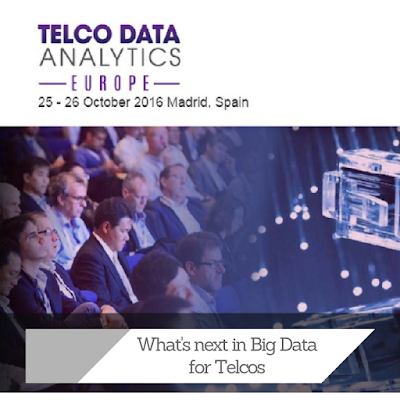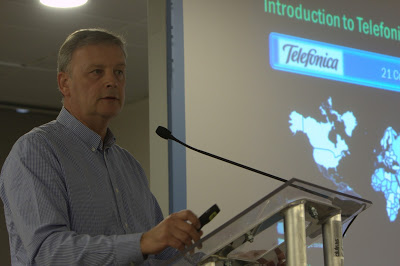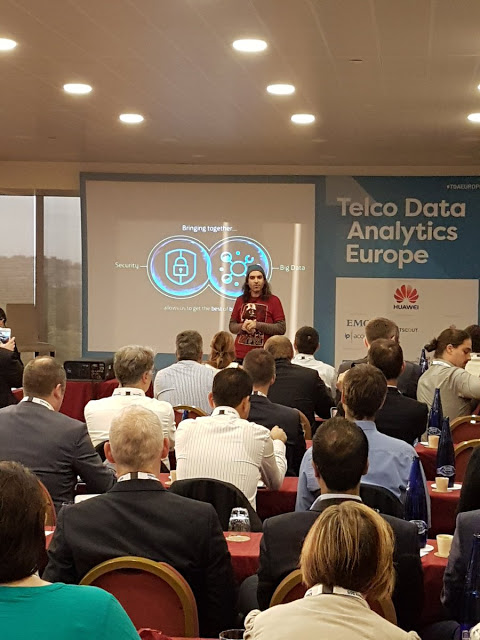Telco Data Analytics: what's next in Big Data for Telcos
The European version of Telco Data Analytics Conference took place on October 25 and 26 in Madrid. This annual event also takes places in the USA and this year there were approximately 100 participants from Operators, Vendors, Startups and OTTs. For the first time, Telefonica was the "host operator" of the event which was run by KNect 365.
 Figure 1: TDA Europe, What's next in Big Data for Telcos
Figure 1: TDA Europe, What's next in Big Data for Telcos
Chema Alonso, Chief Data Officer of Telefonica, gave the opening keynote where he argued that taking data-driven decisions is now a must for all organizations, emphasizing the growing importance of security and privacy for any Big Data initiative.
 Figure 2: Phil Douty discusses the power of anonymized ad aggregated telco - Photo by Lee Tucker
Figure 2: Phil Douty discusses the power of anonymized ad aggregated telco - Photo by Lee Tucker
Another question which was discussed on the IOT analytics panel was: if you had $100 million to invest in IoT, what would you invest in? All panel members agreed that part should be invested in security: when everything (people and things) are connected to the Internet, the risk for abuse and disasters increases significantly. Several studies have shown that security in IoT requires more attention. Another suggestion was to invest in "innovation at the edge", that is, to invest some of the money in IoT-related startups so that the projects are not hindered by the rules of large organizations, which can hinder progress. Finally, for IoT Analytics to really take of, thriving ecosystems are fundamental, probably around a few main platforms in the world that will host a large share of the IoT data available. Such platforms would then give secure and "permissioned" access to data to developers, startups and businesses in order to create value.
The last topic which was discussed was Big Data for Social Good, explaining how Big Data, and more specifically telco data, can help measure progress on the 17 Sustainable Development Goals of the United Nations. More details can be read in this post.
 Hybrid Cloud
Hybrid Cloud Cyber Security & NaaS
Cyber Security & NaaS AI & Data
AI & Data IoT & Connectivity
IoT & Connectivity Business Applications
Business Applications Intelligent Workplace
Intelligent Workplace Consulting & Professional Services
Consulting & Professional Services Small Medium Enterprise
Small Medium Enterprise Health and Social Care
Health and Social Care Industry
Industry Retail
Retail Tourism and Leisure
Tourism and Leisure Transport & Logistics
Transport & Logistics Energy & Utilities
Energy & Utilities Banking and Finance
Banking and Finance Sports
Sports Smart Cities
Smart Cities




